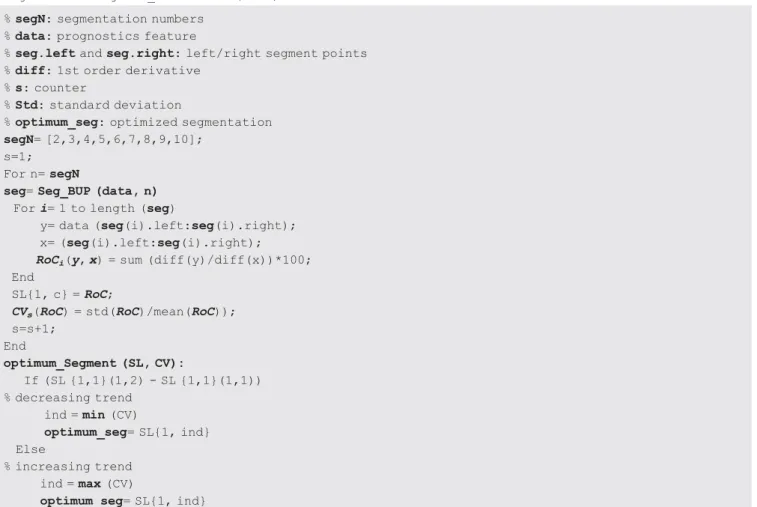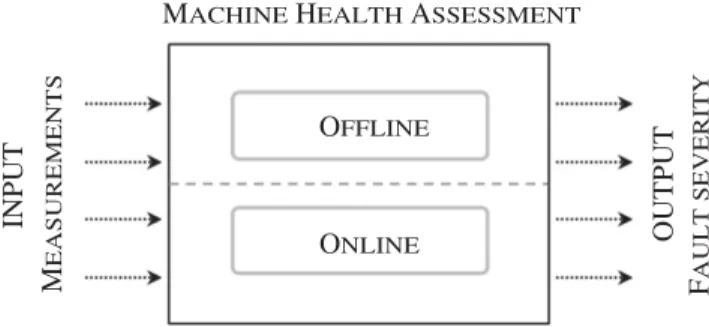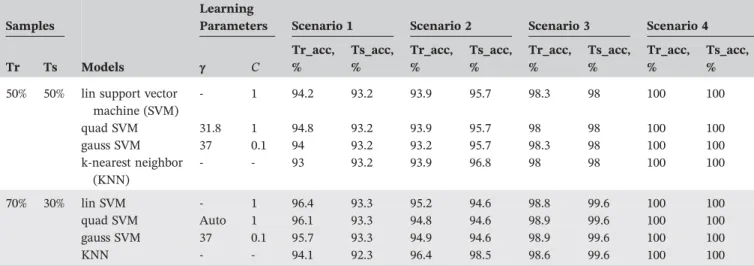Feature selection and fault‐severity classification–based machine health assessment methodology for point machine sliding‐chair degradation
Texte intégral
Figure
![FIGURE 1 The proposed methodology workflow [Colour figure can be viewed at wileyonlinelibrary.com]](https://thumb-eu.123doks.com/thumbv2/123doknet/2959618.81290/4.892.189.701.836.1103/figure-proposed-methodology-workflow-colour-figure-viewed-wileyonlinelibrary.webp)


![FIGURE 4 Collected condition monitoring sensory time series [Colour figure can be viewed at wileyonlinelibrary.com]](https://thumb-eu.123doks.com/thumbv2/123doknet/2959618.81290/10.892.147.748.576.1015/figure-collected-condition-monitoring-sensory-series-colour-wileyonlinelibrary.webp)
Documents relatifs
In this paper, feature extraction from faulty bearing vibration signals is performed by a combination of signal's time-varying statistical parameters and features obtained through
In this paper, feature extraction from faulty bearing vibration signals is performed by a combination of signal's time-varying statistical parameters and features
Using these variants, we explore different forms to improve the lower bounds and to update the initial set of binary variables. The various performances of the described
The proposed method is composed of a feature selection procedure and a two-step classification strategy, both based on a specific mass function construction method inspired by
Also the obtained accuracies of different classifiers on the selected fea- tures obtained by proposed method are better that the obtained accuracies of the same
Also, as there have been developed methods for automating this process, the feature set size increases dramatically (leading to what is commonly refer to as
The aim of the first step is the extraction of the relevant parameters; the proposed technique consists of preprocessing the bearing fault vibration signal using
The article is structured in the following manner: in the section 2, we present briefly some basic theoretical aspects concerning the discriminant analysis; in the section 3 we
![FIGURE 5 Accelerated sliding‐chair plate failure modeling [Colour figure can be viewed at wileyonlinelibrary.com]](https://thumb-eu.123doks.com/thumbv2/123doknet/2959618.81290/11.892.270.630.640.1118/figure-accelerated-sliding-failure-modeling-colour-figure-wileyonlinelibrary.webp)
![FIGURE 6 Extracted time‐domain features from force time series [Colour figure can be viewed at wileyonlinelibrary.com]](https://thumb-eu.123doks.com/thumbv2/123doknet/2959618.81290/12.892.188.702.396.1112/figure-extracted-domain-features-series-colour-figure-wileyonlinelibrary.webp)
![FIGURE 7 Normalized time domain features [Colour figure can be viewed at wileyonlinelibrary.com]](https://thumb-eu.123doks.com/thumbv2/123doknet/2959618.81290/13.892.271.626.112.389/figure-normalized-domain-features-colour-figure-viewed-wileyonlinelibrary.webp)


